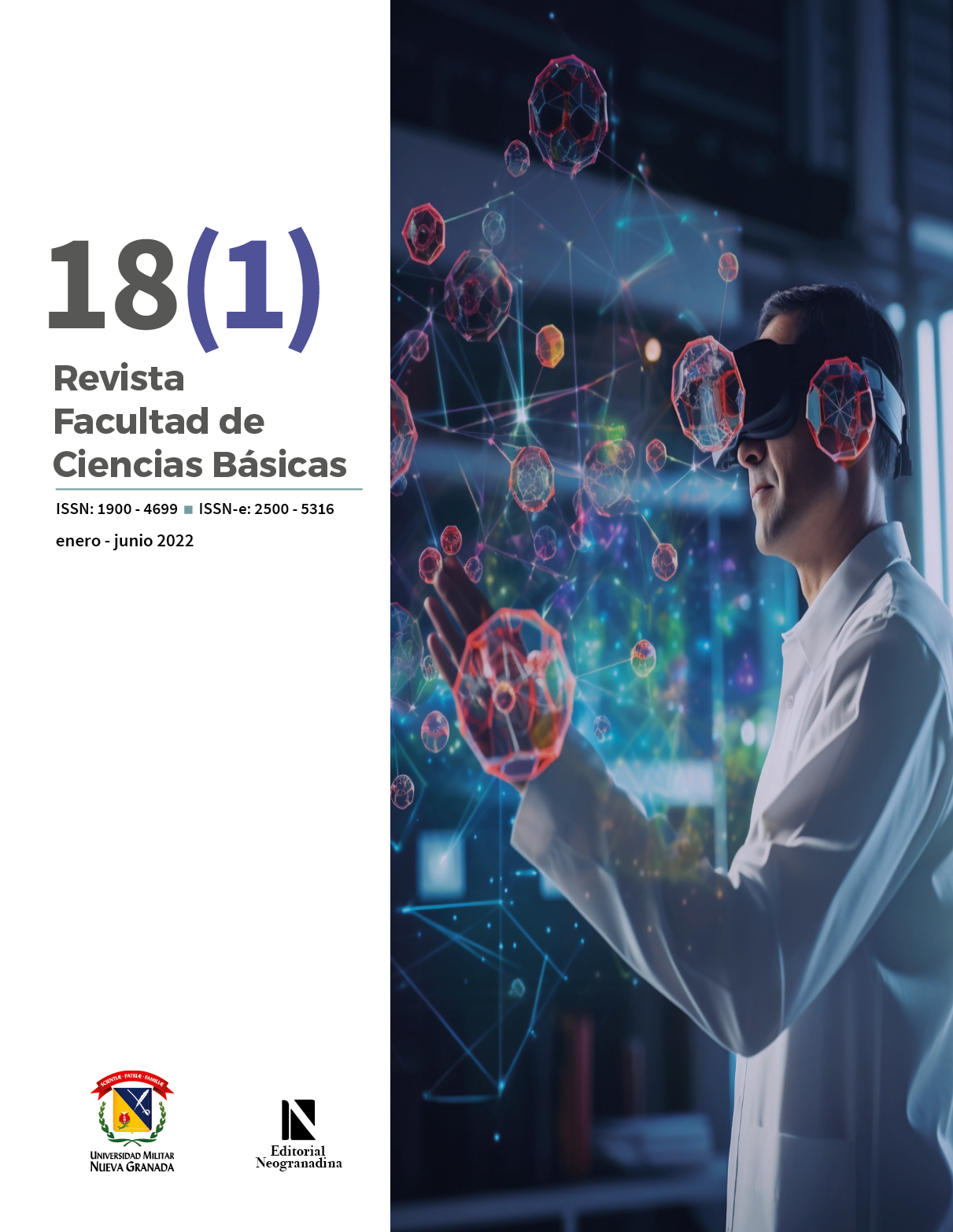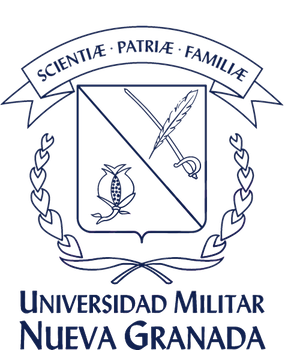Modelo matemático para el control de la transmisión paralela del covid-19 por individuos sintomáticos y asintomáticos
Resumen
Se desarrolló un modelo matemático basado en ecuaciones diferenciales ordinarias que describe la dinámica de la COVID-19 en una comunidad humana donde los individuos infectados pueden ser sintomáticos o no y sobre la cual se implementan políticas de salud pública. Con interés en intervenciones, ya sea por prevención (como el uso de máscaras, higiene de manos, distanciamiento social) o por tratamiento (farmacéutico), se investiga si el problema de salud controlable, por consiguiente, se analiza la estabilidad y controlabilidad de las soluciones del modelo con base en el número básico de reproducción; luego, se establece un criterio de cobertura de la prevención a partir se del número de reproducción de control, proporcionando diferentes escenarios de simulación para esta medida de control. Los resultados revelaron que la prevención es eficaz para reducir la transmisión, sin embargo, su eficacia puede reducirse al no saberse con certeza la magnitud de la transmisión de los individuos con la infección pero sin síntomas y el grado de participación de quienes poseen tal condición, hecho que posibilitó la reaparición de brotes sostenidos de la COVID-19.
Descargas
Referencias bibliográficas
T. Phan, “Novel coronavirus: From discovery to clinical diagnostics,” Infection, Genetics and Evolution, vol. 79, no 2020, 2020, doi: 10.1016/j.meegid.2020.104211
J. A. Rodriguez-Morales, D. K. Bonilla-Aldana, G. J. Balbin-Ramon, A. A. Rabaan, R. Sah, A. Paniz-Mondolfi, ... & S. Esposito, “History is repeating itself: Probable zoonotic spillover as the cause of the 2019 novel Coronavirus Epidemic,” Infez Med., vol. 28, no. 1, pp. 3-5, 2020.
V. M. Corman, D. Muth, D. Niemeyer, & C. Drosten, “Hosts and sources of endemic human coronaviruses,” Advances in virus research, vol. 100, pp. 163-188, 2018, doi:10.1016/bs.aivir.2018.01.001
E. E. Walsh, J. H. Shin, & A. R. Falsey, “Clinical impact of human coronaviruses 229E and OC43 infection in diverse adult populations,” The Journal of infectious diseases, vol. 208, no. 10, pp. 1634-1642, 2013, doi:10.1093/infdis/jit393
L. Van Der Hoek, K. Pyrc, M. F. Jebbink, W. Vermeulen-Oost, R. J. Berkhout, K. C. Wolthers, ... & B. Berkhout, “Identification of a new human coronavirus,” Nature medicine, vol. 10, no. 4, pp. 368-373, 2004, doi: 10.1038/nm1024
P. C. Woo, S. K. Lau, C. M. Chu, K. H. Chan H. W. Tsoi, Y. Huang, ... & K. Y. Yuen, “Characterization and complete genome sequence of a novel coronavirus, coronavirus HKU1, from patients with pneumonia,” Journal of virology, vol. 79, no. 2, pp. 884-895, 2005, doi: 10.1128/JVI.79.2.884-895.2005
L. Enjuanes, S. Zuñiga, C. Castaño-Rodriguez, J. Gutierrez-Alvarez, J. Canton, & I. Sola, “Molecular basis of coronavirus virulence and vaccine development,” Advances in virus research, vol. 96, pp. 245-286, 2016, doi: 10.1016/bs.aivir.2016.08.003
P. Zhou, X. L. Yang, X. G. Wang, B. Hu, L. Zhang, W. Zhang, ... & Z. L. Shi, “Discovery of a novel coronavirus associated with the recent pneumonia outbreak in humans and its potential bat origin,” bioRxiv. Cold Spring Harb Lab, pp. 22-914952, 2020, doi: 10.1101/2020.01.22.914952
B. Meyer, M. A. Müller, V. M. Corman, C. B. E. M. Reusken, D. Ritz & G. Godeke, “Antibodies against MERS Coronavirus in Dromedaries. United Arab Emirates,” Emerg Infect Dis., vol. 20, no. 4, pp. 552-559, 2014.
E. S. A. Barrera, R. G. Pliego, J. E. Raya, J. C. Basurto, & J. G. Machorro, “Coronavirus de tipo 2 causante del síndrome respiratorio agudo severo, un virus que llegó para quedarse,” Revista Mexicana de Mastología, vol. 11, no. 1, pp. 9-17, 2021.
C. Wang, P. W. Horby, F. G. Hayden & G. F. Gao, “A novel coronavirus outbreak of global health concern,” The lancet, vol. 395, no. 10223, pp. 470-473, 2020, doi: 10.1016/S0140-6736(20)30185-9
N. Chen, M. Zhou, X. Dong, J. Qu, F. Gong, Y. Han, ... & L. Zhang, “Características epidemiológicas y clínicas de 99 casos de neumonía por el nuevo coronavirus de 2019 en Wuhan, China: un estudio descriptivo,” Lancet, vol. 395, no. 10223, pp. 507-513, 2020.
S. Jiang, S. Xia, T. Ying & L. Lu, “A novel coronavirus (2019-nCoV) causing pneumonia-associated respiratory syndrome,” Cellular & molecular immunology, vol. 17, no. 5, pp. 554-554, 2020, doi: 10.1038/s41423-020-0372-4
M. L. Holshue, C. DeBolt, S. Lindquist, K. H. Lofy, J. Wiesman, H. Bruce, ... & S. K. Pillai, “First case of 2019 novel coronavirus in the United States,” New England journal of medicine, vol. 382, no. 10, pp. 929-936, 2020, doi: 10.1056/NEJMoa2001191
F. Di Gennaro, D. Pizzol, C. Marotta, M. Antunes, V. Racalbuto, N. Veronese, & L. Smit, “Coronavirus diseases (COVID-19) current status and future perspectives: a narrative review,” International journal of environmental research and public health, vol. 17, no. 8, pp. 2690, 2020, doi: 10.3390/ijerph17082690
F. J. Díaz-Castrillón & A. I. Toro-Montoya, “SARS-CoV-2/COVID-19: The virus, the disease and the pandemic,” Medicina & laboratorio, vol. 24, no. 3, pp. 183-205, 2021.
S. Lee, T. Kim, E. Lee, C. Lee, H. Kim, H. Rhee, ... & T. H. Kim, “Clinical course and molecular viral shedding among asymptomatic and symptomatic patients with SARS-CoV-2 infection in a community treatment center in the Republic of Korea,” JAMA internal medicine,” vol. 180, no. 11, pp. 1447-1452, 2020, doi:10.1001/jamainternmed.2020.3862
L. Chaw, W. C. Koh, S. A. Jamaludin, L. Naing, M. F. Alikhan, & J. Wong, “Analysis of SARS-CoV-2 transmission in different settings, Brunei,” Emerging infectious diseases, vol. 26, no. 11, pp. 2598-2606, 2020, doi:10.3201/eid2611.202263
D. McEvoy, C. McAloon, A. Collins, K. Hunt, F. Butler, A. Byrne, ... & S. J. More, “Relative infectiousness of asymptomatic SARS-CoV-2 infected persons compared with symptomatic individuals: a rapid scoping review,” BMJ open, vol. 11, no. 5, pp. e042354, 2021, doi:10.1101/2020.07.30.20165084
M. Egger, L. Johnson, C. Althaus, A. Schöni, G. Salanti, N. Low & Norris S. L, “Developing WHO guidelines: time to formally include evidence from mathematical modelling studies,” F1000Research, vol. 6, no. 0, pp. 1584, 2017, doi: 10.12688/f1000research.12367.2
A. J. Kucharski, T. W. Russell, C. Diamond, Y. Liu, J. Edmunds, S. Funk, ... & S. Flasche, “Early dynamics of transmission and control of COVID-19: a mathematical modelling study,” The lancet infectious diseases, vol. 20, no. 5, pp. 553-558, 2020, doi: 10.1016/S1473-3099(20)30144-4
B. Tang, X. Wang, Q. Li, N. L. Bragazzi, S. Tang, Y. Xiao & J. Wu, “Estimation of the transmission risk of the 2019-nCoV and its implication for public health interventions,” Journal of clinical medicine, vol. 9, no. 2, pp. 462, 2020, doi: 10.3390/jcm9020462
E. Díaz, R. A. Menéndez, P. V. Cortés, M. G. Escapa, B. Suberviola, A. S. Lázaro, ... & M. C. González, “Tratamiento farmacológico de la COVID-19: revisión narrativa de los Grupos de Trabajo de Enfermedades Infecciosas y Sepsis (GTEIS) y del Grupo de Trabajo de Transfusiones Hemoderivados (GTTH),” Medicina intensiva, vol. 45, no. 2, pp. 104-121, 2021 doi: 10.1016/j.medin.2020.06.017
World Health Organization, WHO living guideline: drugs to prevent COVID-19: interim guidance, 2 March 2021 (No. WHO/2019-nCoV/prophylaxes/2021.1). World Health Organization, 2021, Recuperado de https://www.who.int/publications/i/item/WHO-2019-nCoV-prophylaxes-2021-1
M. W. Hirsch, S. Smale, and R. L. Devaney, Differential Equations, Dynamical Systems, and an Introduction to Chaos. New York: Academic Press, 2012.
T. Myint-U, Ordinary differential equations. New York: North Holland, 1978.
B. Aguirre Hernández, C. A. Loredo-Villalobos, E. C. Díaz-González & E. Campos-Cantón, “Estabilidad de sistemas por medio de polinomios Hurwitz”, Revista de Matemática: Teoría y Aplicaciones, vol. 24, no. 1, pp. 61-77, 2017, doi: 10.15517/rmta.v24i1.27751
N. Rouche, P. Habets & M. Laloy, Stability theory by Liapunov's direct method, vol. 4. New York: Springer-Verlag, 1977.
H. K. Khalil & J. W. Grizzle, Nonlinear systems, vol. 3. Upper Saddle River, NJ: Prentice hall, 2002.
H. Leiva, “Rothe’s fixed point theorem and controllability of semilinear nonautonomous systems”, Systems & Control Letters, vol. 67, no. 2014, pp. 14-18. doi: http://dx.doi.org/10.1016/j.sysconle.2014.01.008
A. Chang, “An algebraic characterization of controllability,” IEEE Transactions on Automatic Control, vol. 10, no 1, pp. 112-113, 1965, doi: 10.1109/TAC.1965.1098056
H. Leiva, “Rothe’s fixed point theorem and controllability of semilinear nonautonomous systems,” Systems & Control Letters, vol. 67, no. 2014, pp. 14-18, 2014, doi: http://dx.doi.org/10.1016/j.sysconle.2014.01.008
W. O. Kermack & A. G. McKendrick, “A contribution to the mathematical theory of epidemics,” Proceedings of the royal society of london. Series A, Containing papers of a mathematical and physical character, vol. 115, no. 772, pp. 700-721, 1927, doi: 10.1098/rspa.1927.0118
C. N. Ngonghala, E. Iboi, S. Eikenberry, M. Scotch, C. R. MacIntyre, M. H. Bonds & A. B. Gumel, “Mathematical assessment of the impact of non-pharmaceutical interventions on curtailing the 2019 novel Coronavirus,” Mathematical biosciences, vol. 325, no. 2020, pp. 108364, 2020, doi: 10.1016/j.mbs.2020.108364
Derechos de autor 2023 Revista Facultad de Ciencias Básicas

Esta obra está bajo una licencia internacional Creative Commons Atribución-NoComercial-SinDerivadas 4.0.











